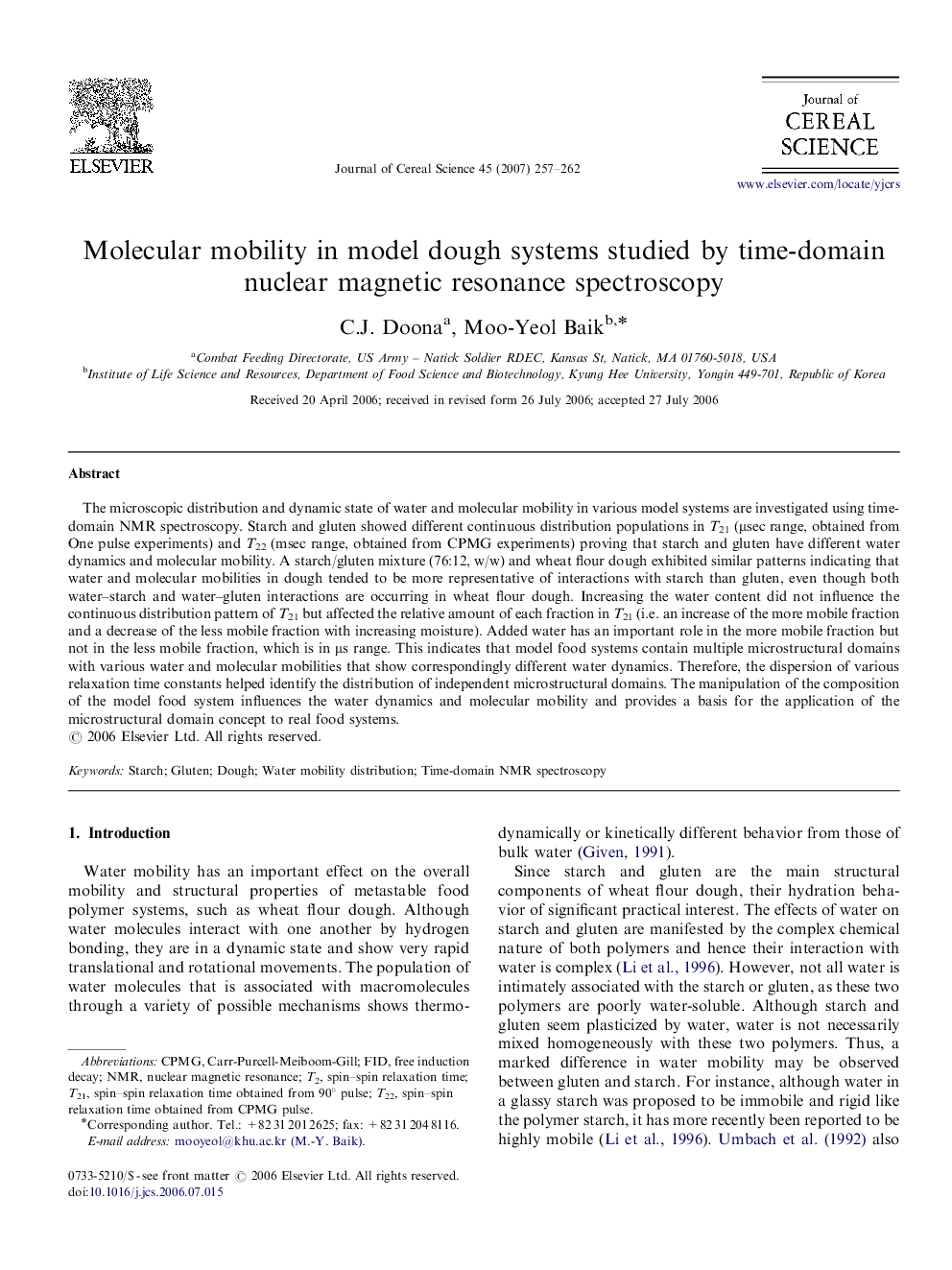| کد مقاله | کد نشریه | سال انتشار | مقاله انگلیسی | نسخه تمام متن |
|---|---|---|---|---|
| 4516858 | 1322377 | 2007 | 6 صفحه PDF | دانلود رایگان |

The microscopic distribution and dynamic state of water and molecular mobility in various model systems are investigated using time-domain NMR spectroscopy. Starch and gluten showed different continuous distribution populations in T21 (μsec range, obtained from One pulse experiments) and T22 (msec range, obtained from CPMG experiments) proving that starch and gluten have different water dynamics and molecular mobility. A starch/gluten mixture (76:12, w/w) and wheat flour dough exhibited similar patterns indicating that water and molecular mobilities in dough tended to be more representative of interactions with starch than gluten, even though both water–starch and water–gluten interactions are occurring in wheat flour dough. Increasing the water content did not influence the continuous distribution pattern of T21 but affected the relative amount of each fraction in T21 (i.e. an increase of the more mobile fraction and a decrease of the less mobile fraction with increasing moisture). Added water has an important role in the more mobile fraction but not in the less mobile fraction, which is in μs range. This indicates that model food systems contain multiple microstructural domains with various water and molecular mobilities that show correspondingly different water dynamics. Therefore, the dispersion of various relaxation time constants helped identify the distribution of independent microstructural domains. The manipulation of the composition of the model food system influences the water dynamics and molecular mobility and provides a basis for the application of the microstructural domain concept to real food systems.
Journal: Journal of Cereal Science - Volume 45, Issue 3, May 2007, Pages 257–262